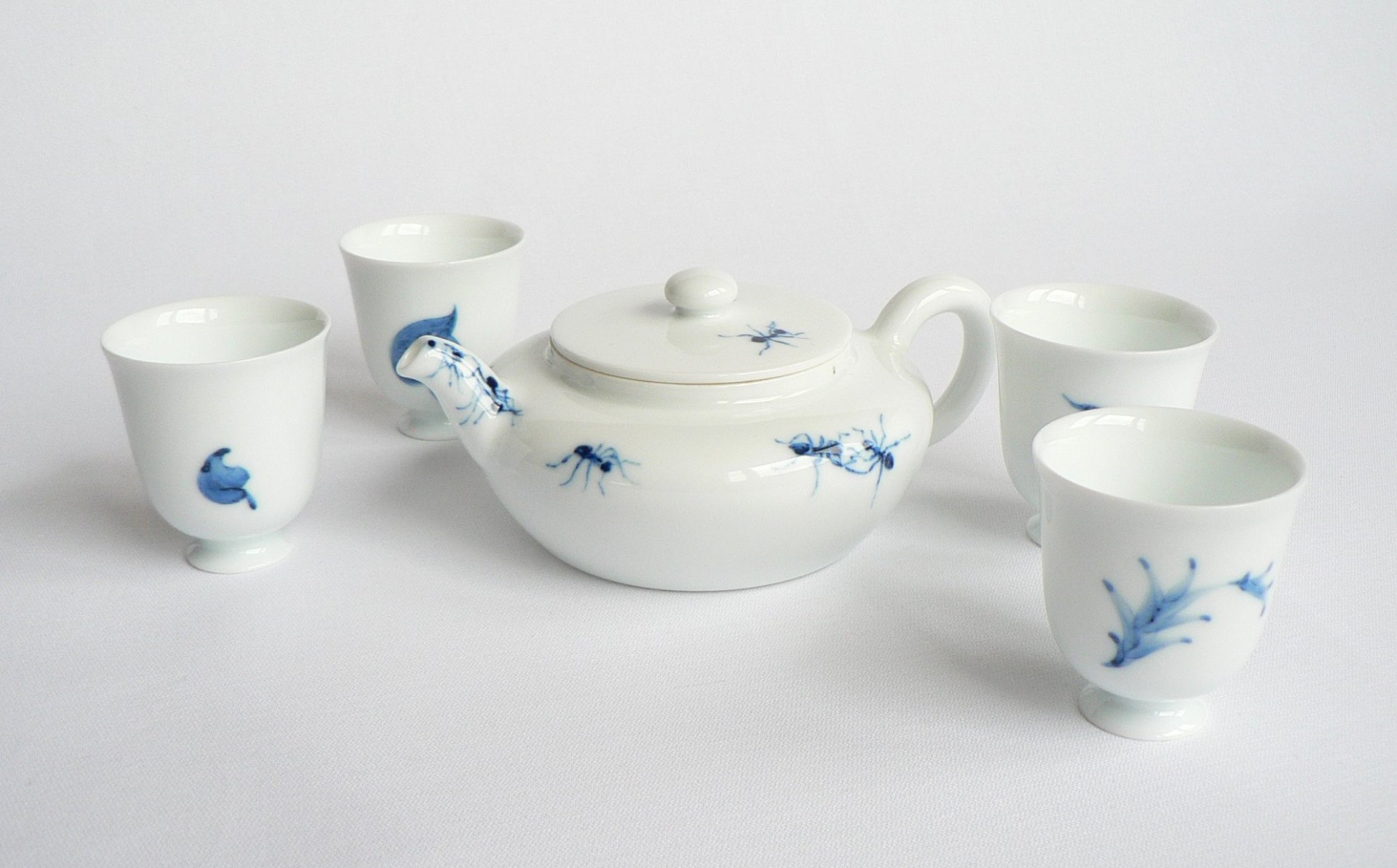Porcelain
My first visit to the Chinese "porcelain city" Jingdezhen was about four years ago. I was painting a collection of 12 large vases for known collector of blue-white porcelain, Mr. Hu Guoyin, based on recommendation of our mutual friend - painter Wu Yi, using particularly the blue-white porcelain qinghua technique (cobalt paint under glaze)-.
I was totally fascinated by this medium and so I returned to Jingdezhen for several times.
The history of ceramics making in Jingdezhen goes back in time for more than 2000 years. In local museum there are exhibits of a fine ceramics and porcelain from the times of Northern and Southern dynasties - Tang and Song. The blue-white qinghua porcelain started to be made here in 14th century during late Yuan dynasty and during the following Ming and Qing dynasties became a synonym for China and its sophisticated culture and art.
It was just the meaningful richness of this seemingly plain medium that attracted me and led to several sets of blue-white porcelain, where I use the traditional shapes (shapes coming from Yuan and Ming period) in connection with the unusual decor processing. I place the traditional shape of the porcelain in contrast with a decor of the old European painting accidence in connection with typical Chinese motifs (insects, flowers, fish...), but also with motifs of everyday reality of the present Chinese towns. Opposite to the traditional ways of decoration the rhythm and composition of the decor is often not defined by line but vast areas in connection with fine shadowing and washing
To work with porcelain it is not only the fragility and the historical burden of this medium that is attractive, but also the uncertainty of the result of often many days or weeks of intensive work. It is because some pieces crack during the firing or there appear deformations, defects in the glaze, unwanted changes of the tone of cobalt and other basically irreversible damages to the work. The painter then work with a certain felling of inefficiency and uncertainty, and the tension during every opening of the kiln can be thrilling.
Jiri Straka, 2017




















